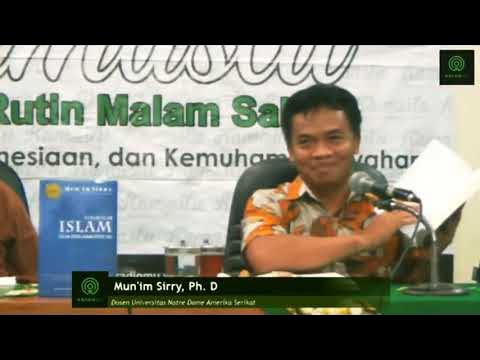Panels sa simbahan na 40 taong nawawala, nasa kustodiya ng National Museum | Kapuso Mo, Jessica Soho
Summary
TLDRThe video discusses a controversy surrounding four antique panels currently on display at the National Museum, which are claimed to have been stolen from the Bolhoon Church in Cebu during the 1980s. The church community has long sought their return, believing the panels are significant religious and cultural artifacts. The National Museum asserts that the panels were legally acquired through a private collector. A dialogue is ongoing between the local government, the church, and the museum to resolve the matter, which may set a precedent for future cultural property disputes in the Philippines.
Takeaways
- 🏛️ The issue revolves around antique church panels from Bolhoon, Cebu that were believed to have been stolen and are now displayed in the National Museum.
- ⛪️ The Bolhoon Church, built in 1783, is a significant cultural and religious site in the Philippines, recognized as a National Cultural Treasure.
- 🗓️ The panels are believed to have been crafted in the early 1800s and are part of the church's iconographic program for evangelization.
- 🚔 In the 1980s, four out of the original six panels from the church's pulpit went missing, and it is alleged that they ended up in the National Museum.
- 📜 The panels are not just religious artifacts but are considered sacred and integral to the church's heritage and community identity.
- 📢 The Bolhoon community and church officials are demanding the return of the panels to their church, asserting their rightful ownership.
- 🔍 An initial investigation into the alleged theft pointed towards an inside job within the church, but the case was dismissed due to failure to prosecute.
- 📸 A former tour guide discovered a match between the missing panels and those in the National Museum, reigniting the call for their return.
- 🏛️ The National Museum claims that the panels were legally obtained through donation and have taken measures for their conservation.
- 🤝 There have been attempts at dialogue between the church, local government, and the National Museum to resolve the issue and return the panels.
- 📜 The incident highlights the broader challenges of regulating and preserving heritage properties, especially those owned by religious institutions.
Q & A
What is the main issue discussed in the transcript?
-The main issue is the controversy surrounding four antique panels believed to have been stolen from the church of Bolhoon, Cebu, and are now displayed in the National Museum.
What is the historical significance of the panels?
-The panels are believed to have been made in the early 1800s and are considered sacred as they are part of the iconographic program of the church, used for evangelization.
When were the panels reported missing from the Bolhoon church?
-The panels were reported missing in the 1980s during the time when a parishioner, Father Charlie, noticed their absence.
What is the current status of the panels?
-Three of the panels are in the custody of the National Museum, one is in the possession of the Museum of Bolhoon, and one is still missing.
Why are the panels considered national treasures?
-The panels are part of the historical and cultural heritage of the Philippines and are considered sacred artifacts of the Bolhoon church, which is recognized as a National Cultural Treasure.
What is the role of the Bolhoon church in the spread of Catholicism?
-Bolhoon church, established by the Augustinian priests, played a significant role in spreading Catholicism in the south of the Philippines.
What evidence supports the claim that the panels were stolen from the church?
-The evidence includes historical records, witness accounts, and the fact that the panels were found to be missing in the 1980s, with no record of legal transfer.
What actions have been taken to recover the panels?
-The church and local government of Bolhoon have requested the return of the panels from the National Museum, and there have been attempts at dialogue and negotiation.
What is the stance of the National Museum regarding the panels?
-The National Museum claims that the panels were acquired legally and through ethical means, and they are committed to preserving cultural heritage.
What legal considerations are involved in the case of the panels?
-The case involves the Anti-Fencing Law of 1979 and Presidential Decree 1612, which focus on the possession of stolen items rather than the act of theft itself.
What is the cultural significance of the panels to the people of Bolhoon?
-The panels are not only religious artifacts but also symbols of the strong faith and historical identity of the people of Bolhoon.
Outlines

هذا القسم متوفر فقط للمشتركين. يرجى الترقية للوصول إلى هذه الميزة.
قم بالترقية الآنMindmap

هذا القسم متوفر فقط للمشتركين. يرجى الترقية للوصول إلى هذه الميزة.
قم بالترقية الآنKeywords

هذا القسم متوفر فقط للمشتركين. يرجى الترقية للوصول إلى هذه الميزة.
قم بالترقية الآنHighlights

هذا القسم متوفر فقط للمشتركين. يرجى الترقية للوصول إلى هذه الميزة.
قم بالترقية الآنTranscripts

هذا القسم متوفر فقط للمشتركين. يرجى الترقية للوصول إلى هذه الميزة.
قم بالترقية الآنتصفح المزيد من مقاطع الفيديو ذات الصلة

Momen Yos Suprapto Turunkan Semua Lukisannya dari Galeri Nasional

Vice World News l The Unfiltered History Tour l Cannes Lions 2022

Retraction of Rizal (Group 1 Presentation)

Rangkuman Lengkal Drama Nikita Mirzani, Lolly dan Vadel Badjideh !!

Employee shoots, kills 2 men inside fast food restaurant on Chicago's South Side

Munim Sirry - Sejarah Kanonisasi Al Quran (Utsman Sampai 1924 di Kairo). Quran Pernah Alami Editing
5.0 / 5 (0 votes)
